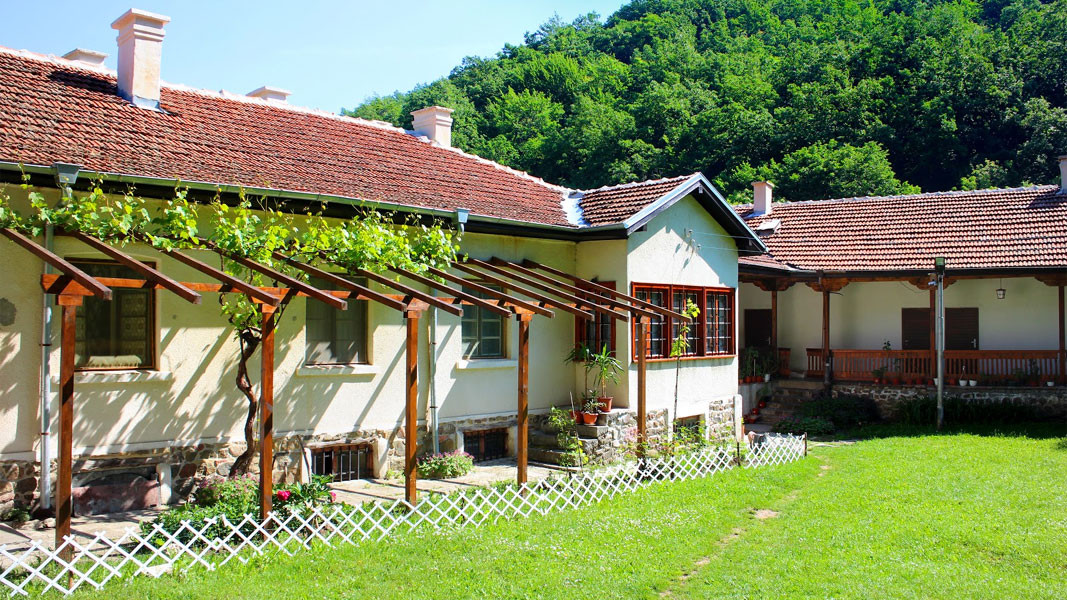Erected in honor and for the glorification of St. Ivan Rilski, the heavenly protector of Bulgaria, the monastery near the village of German is one of the attractive places for meeting Easter in Bulgaria. In bright days like today, the monastery is full of believers who come to hear the bell ringing and the joyful chant – "Christ is Risen."

“Monasteries are always open to visitors, and as a cleric of Mount Athos once said, if the monasteries closed their doors to the pilgrims, then the Lord will shut the doors of the Kingdom of Heaven to priests. Therefore, all who come to find peace in God are welcome every single day. Let God give them peace of mind in their thoughts, in their work, with their families, and with the rest of the people, so that they can thrive in their deeds,” Hieromonk Pimen says.

The monastery was founded in the 10th century and, according to the legend, before it was built there, St. Ivan Rilski used to live there for a while. During the reign of King Peter / 927-969 / the monastery developed as an important spiritual center. Later, under Byzantine rule, it received gifts from Emperor Alexios I Komnenos. During the invasion of the Ottoman troops and the conquest of Sofia in 1382 the holy cloister was destroyed. It was restored later and in the seventeenth century it regained its role as a great spiritual center. The next destruction of the Germanski monastery took place during riots in the region of Kardzhali. In 1818 surviving monks with modest means were trying to rebuild it. It was not until 1886 that a new church was built, with icons painted by remarkable masters - the brothers Ivan and Nikola Dospevski. We learned more about the monastery from Julia Marinova – a librarian in the St. Ivan Rilski community center in the village of German:

"Here, along the nameless creek, in the folds of the Lozen Mountains, St. Ivan lived for a while before going to the Rila Mountain. It is said that King Peter, who wanted to meet St. Ivan Rilski, first sought for him here. But because he did not want to meet royal people, the saint headed up to the mountain. It was hot and he stopped and said, ‘Oh God, water!’ At that moment, a stream came out of a rock. It is believed that during this time Patriarch German also came to these places, perhaps to meet the Holy Hermit. It is known that the village bears the name of the Patriarch of that time. People used to come to the spring of St. Ivan for holidays to drink of the water for good health.”

The German monastery entered Bulgarian history also with the loan, which the Zograf Monastery in Athos granted to the Bulgarian state to buy wheat at the time of the First National Catastrophe (the period after the Balkan Wars of 1912-1913).
"In 1918 the Zograf Monastery of ‘St. Georgi the Victorious ‘ on Mount Athos, which is a Bulgarian monastery, sent 3 million golden levs and thus the population of Bulgaria was literally saved from famine and death. The situation at that time in Bulgaria was extremely difficult,” Hieromonk Pimen says. “The people had a spirit, they had faith and St. George and at that moment the monastery provided help."

"The flow of people to the Germanski Monastery has never ceased. But after the tragic events of 1944, funds for the Zograf Monastery almost stopped until the year 2000. The properties today are now managed by believers who want to help people in every way through the church and faith."
English: Alexander Markov
Photos: private libraryA reproduction of Petar Bogdan's manuscript "On the Antiquity of the Fatherland and on Bulgarian Affairs" - the first treatise on the history of Bulgaria, written almost a century before the famous "Istoriya Slavyanobolgarskaya" (Slav-Bulgarian..
Every year, on the eve of the Day of Saints Cyril and Methodius, the Bulgarian alphabet, enlightenment, culture and Slavic literature - May 24 - a Bulgarian delegation led by the President of Parliament or the Head of State is received by the Pontiff of..
Ninety years ago, on 19 May 1934, the Zveno political movement and the Military League staged a bloodless coup in Bulgaria. In the name of modernising the country, the so-called "national revival", they suspended the Tarnovo Constitution , banned the..
Sofia University St. Kliment Ohridski is to play host to more than 300 scholars from all over the world at the traditional international conference of the..

+359 2 9336 661
